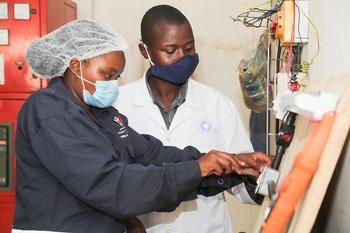Context
Kenya is one of the ten leading economies in sub-Saharan Africa and East Africa’s most developed industrial nation. Despite a stable economic environment and a resilient services sector, unemployment is on the rise for the growing population of young people. The failure of vocational training to cater to industrial sector needs means there is a lack of qualified professionals who could raise productivity and foster growth.
In response, the Kenyan Government is now reforming the vocational training system. It plans to improve access to training, as well as its quality and relevance. Private sector input could make vocational training less theoretical and more needs-based. So far there are, however, not many examples on how the private sector can be involved in vocational training. One solution could be dual training, in which individual training modules could take place within companies.
Objective
Kenya is reducing youth unemployment by improving its vocational training system.

